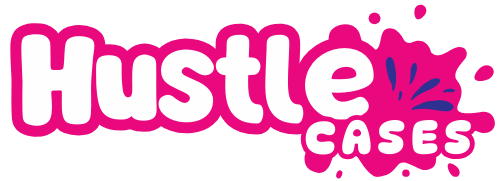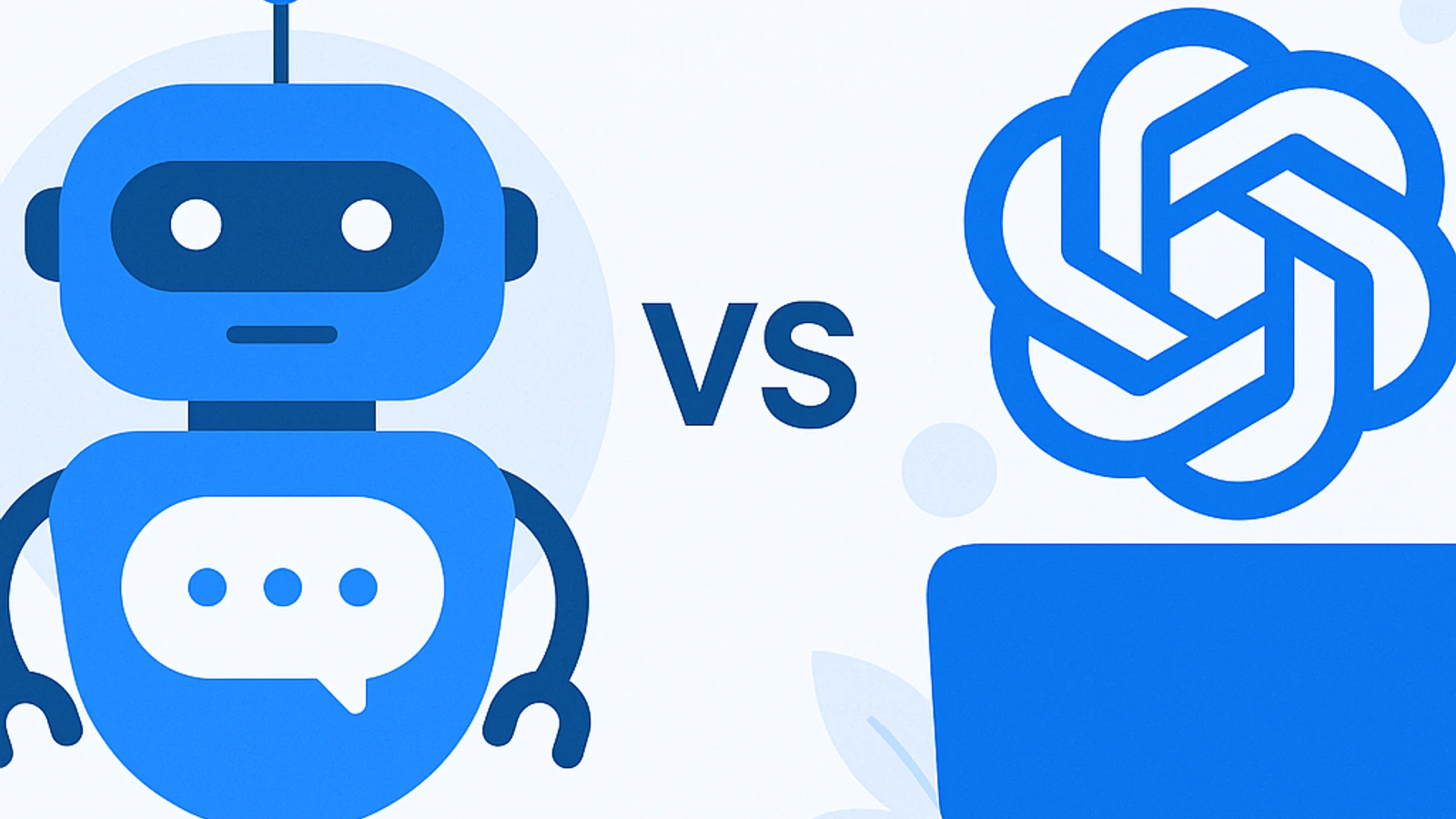Business leaders are constantly bombarded by terms such as “ChatGPT”, “Chatbot”, “Generative AI”, and so on.
You may find it difficult to decide what is best for your company. Let’s simplify it to help you select the best tool. We want to dispel some myths about AI and ChatGPT before we get into the differences between ChatGPT, chatbots and ChatGPT.
Table of Contents
Myth 1 – All AI is ChatGPT
ChatGPT, a great example of Generative Artificial Intelligence technology that generates text similar to human speech based on input received. It is not all AI. Think of facial recognition and self-driving vehicles.
Myth 2: Conversational AI is the same as Generative AI
The AI can create all sorts of things, just like humans. (Ex: ChatGPT, Mid Journey, etc)
Conversational AI is a type of AI that focuses on solving specific issues by talking to and interacting other systems. (E.g. chatbots)
Myth 3 – Generative AI cannot be used for customer interaction because ChatGPT is hallucinatory.
ChatGPT does not use Intercom or Zendesk for customer interaction. It is a tool that can help users with their tasks and talk like a human.
The product does come with risks such as:
- It may struggle to understand nuanced or complex customer requests
- You can also hallucinate or give false information.
- You might even lose customers by redirecting them to your competitors
Can I use ChatGPT to interact with customers?
The short answer is no, but you CAN use the underlying technology–Generative AI.
ChatGPT was not available before businesses were able to automate customer interaction with an established method: chatbots. Now that Generative AI is available as an alternative to ChatGPT, the question arises: which tool is best for your business.
Chatbots vs. ChatGPT (Generative AI)
You’ll want to consider the following factors when choosing the best tool for your company: risks, costs and potential benefits over time.
Here are some lenses you can use to automate customer interactions:
- Customer Engagement and Experience: How will it benefit me and my business?
- Accuracy, predictability and flexibility: Can the system provide consistent, reliable responses while handling new, unexpected inputs?
- Development and maintenance costs: What are the initial and long-term costs, and what resources will be required to use this tool? How long will it take for the tool to be deployed?
- Scalability: How well can this system be upgraded to meet changing business requirements?
- Integration ease: Can the system be easily integrated into existing processes without having to make too many changes?
- Business growth implications: How will it impact my business by providing data-driven insight for constant growth and simplifying operations?
Here is a quick comparison between ChatGPT (Generative AI), and chatbots.
| Criteria | ChatGPT (Generative AI), | Chatbots |
| Precision, predictability and flexibility | It can offer flexible and context-aware answers, but it is unpredictable if not finely tuned. | Lack of flexibility but provide predictable and consistent responses. |
| Development and Maintenance | It requires initial training, periodic retraining and is more adaptable to new situations. | Require continuous manual updates for new scenarios. |
| User Experience | Can provide more natural and engaging interactions. | Users may feel rigid and repetitive. |
| Cost-effectiveness | Initial cost is higher, but it could be more cost-effective in the long run. | Short-term costs are generally lower. |
| Scalability | The system is highly scalable and can be improved over time with no proportional increase in cost or effort. | They are scalable within their scripts, but expansion requires manual updating. |
| Integration made easy | Integration efforts must be more sophisticated. | Easy to integrate thanks to predefined rules and a simple logic. |
| User engagement quality | Personalized, dynamic responses increase engagement. | Low engagement due to lack complex personalization. |
| Impact on business growth | Enhancing the customer experience: Offers contextually-aware responses that are tailored to each individual.Improve operational efficiency by automating a wide range of inquiries.Supporting data driven decision making: Beyond its chatbot capabilities, the software can analyze and predict users’ preferences and behaviors. | Enhancing the customer experience: Limited personalization to scripted responses.Manual updates are required to improve operational efficiency.Supporting data-driven decisions: Possibility to provide post-facto insight on engagement, goal attainment, and workflow improvements. |
We’ll take a look at the differences between ChatGPT/GenerativeAI and chatbots (backed by data-driven insights), and how they can help you make a more informed decision.
The showdown between Chatbots and ChatGPT: reliability.
Chatbots are not engaging with customers who require more nuanced help. Forbes reports that 78% have used a chatbot within the last 12 months. However, 80% of those consumers said they were more frustrated by using chatbots. Gartner predicts, however, that chatbots are going to be the primary communication channel for customer service by 2027!
ChatGPT, on the other hand, produces responses that are more personalized and natural, increasing user satisfaction. GPT-4 is known for its creativity, but BCG found that it underperformed when used to solve business problems.
| Criteria | Chatbots | ChatGPT/Generative AI |
| Enjoy the Benefits | Consistent, reliable and predictable | Understanding and solving complex queries.Needs minimal human backup. |
| Disadvantage | Can’t solve complex queries.Human backup is often needed. | Unreliable, inaccurate and unreliable.Sometime unsafe or harmful. |
Chatbots and ChatGPT: Comparing the user experience
Chatbots are not engaging with customers who require more nuanced help. Forbes reports that 78% have used a chatbot within the last 12 months. However, 80% of those consumers said they were more frustrated by using chatbots. Gartner predicts, however, that chatbots are going to be the primary communication channel for customer service by 2027!
ChatGPT, on the other hand, produces responses that are more personalized and natural, increasing user satisfaction. GPT-4 is known for its creativity, but BCG found that it underperformed when used to solve business problems.
| Criteria | Chatbots | ChatGPT/Generative AI |
| Enjoy the Benefits | Try and test for business. | Dynamic and personalized responses |
| Disadvantage | Responses that are rigid and impersonal | It is not suitable for business unless it has been fine-tuned. |
It is important to maintain customer engagement and interest, particularly as user expectations continue to evolve.
Cost, maintenance and scalability
Chatbots can be developed and maintained easily and at a lower cost. As user demand changes, updating chatbots so that they can handle new types queries becomes more laborious as these updates need to be done manually.
Generative AI, on the other hand requires significant upfront costs and resource during initial development. It offers greater scalability, as it continues to improve over time with minimal cost and effort. This makes it more relevant and adaptable in the long run.
| Criteria | Chatbots | ChatGPT/Generative AI |
| Enjoy the Benefits | Easy to maintain and develop.Reduced initial investment | Easy scalingAs a foundational model upgrade, the system automatically becomes intelligent. |
| Disadvantage | It is difficult to scale.Upgrades require manual labor. | Complex to develop.Costs and resources upfront are high. |
Chatbots vs. ChatGPT: Integration challenges
Due to their predictability and rule-based nature they are easier to integrate into existing systems.
Integration of AI-based systems is more complicated. This can have a negative impact on deployment times, resource allocation and even existing business processes.
| Criteria | Chatbots | ChatGPT/Generative AI |
| Enjoy the Benefits | Integration is easy and quick.Will not disrupt business processes | AI can automatically call the relevant tools based on its judgement and instructions. |
| Disadvantage | Integration must be explicitly programmed. | It can be unpredictable, and the consequences can be devastating if they are not controlled.Integration can be complex, challenging and difficult. |
Business growth: the role of marketing
Chatbots that are structured can be a great tool for improving customer service and efficiency. They can meet user expectations and personalize the interaction to some extent. Chatbots are also able to analyze previous interactions and provide data-driven insights into engagement, goal attainment, and possible workflow improvements.
ChatGPT, unlike chatbots can improve customer experience through personalized responses tailored to each user’s specific situation. It can also automate more inquiries, freeing human agents to handle more complex tasks.
Generative AI is able to analyze and predict user behavior and preferences. These data enable businesses to take data-driven decision proactively.
| Criteria | Chatbots | ChatGPT/Generative AI |
| Enjoy the Benefits | Solid foundation to support customer experience and business operations.This tool provides insights into user behavior, goal achievement, and improvements. | Keeps context of previous conversations in memory.Knowledge base answers a wide range of questions.Provides tailored and personalized responses. |
| Disadvantage | Limited personalization.Need human support for complex questions. | It needs to be fine tuned for accuracy and specific business use cases.It is important to evaluate the quality of products. |
Can ChatGPT and chatbots work together?
We’re used seeing ChatGPT and Structured chatbots as rivals. What if they worked together?
Combining the two technologies allows businesses to develop AI Agents which avoid the inherent risks of Generative AI, such as giving inappropriate or harmful answers. It also overcomes the rigidity that comes with completely structured chatbots.
Businesses can create an even more powerful digital assistant by combining the reliability of chatbots with the flexibility of Generative Artificial Intelligence. This assistant is capable of performing:
- Automating many different interactions
- Customized and personalized responses can enhance the customer experience
- Consistency, reliability, and safety
- Data-driven insights to help businesses grow and improve
Exists a solution that combines the best of both technologies in a way that is balanced?
The combined potential of these technologies
Tars has used a hybrid method to provide businesses with the best of both worlds – a custom AI agent that is tailored to their business needs in the familiar form of a Conversational Interface.
Reliable and flexible. Your AI Agent is built on a knowledge base that has been customized to your company, which limits hallucinations. It uses an AI self-evaluation to determine if the answers it provides are up to business standards. It is powered by Conversational AI and can navigate complex questions while providing personalized answers.
Tars’ team builds the Agent based on initial business requirements. After that, you can update, manage and tweak it with a no-code interface. It can be used across many channels including your website and WhatsApp. The No-Code drag-and-drop tool makes it simple for anyone to create Agentic workflows.
Easy integration: Your AI agent can automate a variety of tasks, such as fetching data from an external database or triggering actions within other applications. You can integrate many tools with the MCP tooling. These include HubSpot Notion Slack Google Sheets and more.
The AI Agent automates the customer journey and improves it. As an expert interactive who can understand context and the underlying intent in conversations, he provides automated, tailored solutions. It provides personalized assistance to customers and prospects, and helps them make informed choices.
AI Agent provides data-driven insights to help your business grow. The AI agent helps your team gain valuable insight into customer preferences, engagement patterns and potential bottlenecks.
AI Agents: the best of AI chatbots and AI in one!
These AI Agents are created to deliver personalized and accurate responses based on a RAG. These AI Agents are designed to solve specific problems and have an easy integration and management.

